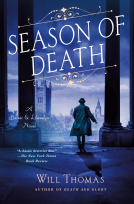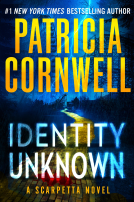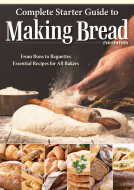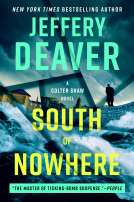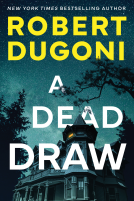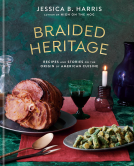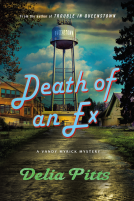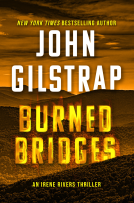
Project Smoke
Seven Steps to Smoked Food Nirvana, Plus 100 Irresistible Recipes from Classic (Slam-Dunk Brisket) to Adventurous (Smoked Bacon-Bourbon Apple Crisp)
by Steven Raichlen
This title was previously available on NetGalley and is now archived.
Send NetGalley books directly to your Kindle or Kindle app
1
To read on a Kindle or Kindle app, please add kindle@netgalley.com as an approved email address to receive files in your Amazon account. Click here for step-by-step instructions.
2
Also find your Kindle email address within your Amazon account, and enter it here.
Pub Date May 10 2016 | Archive Date Sep 20 2017
Description
A complete, step-by-step guide to mastering the art and craft of smoking, plus 100 recipes—every one a game-changer –for smoked food that roars off your plate with flavor. Here’s how to choose the right smoker (or turn the grill you have into an effective smoking machine). Understand the different tools, fuels, and smoking woods. Master all the essential techniques: hot-smoking, cold-smoking, rotisserie-smoking, even smoking with tea and hay—try it with fresh mozzarella. Here are recipes and full-color photos for dishes from Smoked Nachos to Chinatown Spareribs, Smoked Salmon to Smoked Bacon-Bourbon Apple Crisp.
USA Today says, “Where there’s smoke, there’s Steven Raichlen.” Steven Raichlen says, “Where there’s brisket, ribs, pork belly, salmon, turkey, even cocktails and dessert, there will be smoke.” And Aaron Franklin of Franklin Barbecue says, “Nothin’ but great techniques and recipes. I am especially excited about the smoked cheesecake.” Time to go forth and smoke.
“If your version of heaven has smoked meats waiting beyond the pearly gates, then PROJECT SMOKE is your bible.”
—Tom Colicchio, author, chef/owner of Crafted Hospitality, and host of Top Chef
“Steven Raichlen really nails everything you need to know. Even I found new ground covered in this smart, accessible book.”
—Myron Mixon, author and host of BBQ Pitmasters, Smoked, and BBQ Rules
Available Editions
| EDITION | Other Format |
| ISBN | 9780761181866 |
| PRICE | $24.95 (USD) |
Average rating from 21 members
Featured Reviews
 Reviewer 312499
Reviewer 312499
I don’t own a smoker but my brother loves his electric smoker. So it is through his eyes that I read this cookbook. Of course, by the end of the book, I was pretty much convinced that I probably need to acquire a stovetop smoker or figure out how to smoke on a gas grill (because I live in a condo in a densely populated area with very little personal outdoor space).
The cookbook basically begins with Seven Steps to Smoking Nirvana, which is an almost thirty page primer on how to smoke food, beginning with choosing your smoker and ending with knowing when your food is done. In addition to the written explanations, this section is chock full of useful diagrams and tables, including the anatomy of a smoker, a table of the forms of wood available, a table of the types of woods used for smoking, a table of key smoking temperatures, and a table of internal temperatures for various degrees of doneness. I like that there is another almost twenty pages of additional information on various types of smokers (and how to use them) put at the back of the book, after the recipes.
After the introduction to smoking, the book proceeds into recipes for the various types of foods that can be smoked: starters, beef, pork, lamb, burgers/sausages/more, poultry, seafood, vegetables/side dishes/meatless smoking, desserts, cocktails. Each recipe begins with an introduction that gives the reader some background on the recipe. Each recipe is formatted so that the yield, method of smoking, prep time, brining time (if required), marinating time (if required), smoking time, grilling time (if required), resting time (if required), chilling time (if required), drying time (if required), fuel, gear, shopping tips and other tips are clearly discernible in the sidebar. For recipes that do not require smoking (but use smoked ingredients), the yield and prep time are given underneath the recipe title. The ingredient list is clearly visible in a different colored text box. Most of the ingredients are commonly available items. When an item – be it an ingredient or a fuel - isn’t readily available, sourcing information (such as store names or websites) is provided in the recipe. For the more exotic meats, such as lamb, alternate meats are suggested as well. Brand names are recommended when it makes a difference. The recipe steps are clearly written and easy to follow. However, you need to be sure that you didn’t discard or misplace the manufacturer’s instructions that came with your smoker, since those are referenced throughout the cookbook for set up of the smoker. Sometimes the recipe is followed by a variation to use a different smoking method, different cut of meat, or different equipment. There is good light-hearted humor throughout the recipes.
The variety of recipes is pretty impressive. The starters include smoked deviled eggs, smoked mozzarella, smoked bread (made by smoking the flour), and smoked gazpacho. The meat recipes run the gamut from a whole beef tenderloin to made from scratch bacon, and from lamb belly to Chinese tea smoked duck. The seafood recipes are similar in their breadth: from oysters smoked in the half shell to smoked planked trout (with bacon!). The meatless recipes include traditional barbecue sides, such as smoked coleslaw and smoked creamed corn, but also some very unexpected recipes, such as smoked mushroom bread pudding and smoked vegetable cassoulet. The six dessert recipes seem to be pretty straightforward recipes that just happened to go into a smoker. Except for the smoked ice cream, I could easily do any one of them in my kitchen – but without the lovely smoky flavor. Most of the eight cocktail recipes are super creative, and rely on either a blast from a handheld smoker or a smoked spirit for the smoky element. In addition to his original recipes, the author also has coaxed recipes out of a number of famous barbecue restaurants from Texas, Oklahoma, Missouri, Kentucky, the Carolinas, and elsewhere in the United States, Canada and Europe to include in the volume. One of the recipes from San Antonio uses cherry syrup as their secret ingredient – who would have thought it!
Interspersed among the recipes are call out boxes that provide additional information on related topics. For example, there is a call out box that lists ingredients that add smoke flavor to recipes without using a smoker. (Of course, bacon and chipotles top that list!) There are also beef, pork, lamb, ground meat, poultry and seafood smoking charts, which indicate the smoker temperature, time and internal temperature for the degree of doneness for each major cut of meat. There is a terrific call out box on food safety for smokers. And there is even a call out box on how to smoke a whole hog! I really appreciated the pictogram of the cuts of pork, as I often forget what cut comes from where. Of course, I had to laugh at the call out box for 28 Foods You Never Dreamed You Could Smoke because he’s right that some of those (like ice and water), I would not even think of smoking.
The food photography in this book is stunning, although there are too little of it for my taste. On occasion, such as at the beginning of a chapter, it is difficult to tell which recipe the photograph is depicting. The instructional photographs are spot on, and very helpful.
The Index to this book is amazing. All the basic recipe ingredients are listed so if you are looking for a recipe with say, Scotch whiskey, you can find that under “S” for Scotch whiskey or “W” for whiskey. All the basic equipment mentioned in the book is also listed in the index, so you can look up page numbers to read about wood, thermometers, and gas smokers. You can even find the page number for how to smoke ice by looking under “I.”
Because I don’t have a smoker, I was reluctant to try any of the recipes from Project Smoke. But then I figured, if the recipe turned out well without the smoke component, it would be super amazing with the smoke component. So I bought the ingredients to make the Smoked Gazpacho, the Chinatown Spareribs with Beijing Barbecue Sauce and the Montreal Meatballs.
First up was the Smoked Gazpacho. This was easy to adapt to a smokerless household: I just skipped the step of smoking the tomatoes, cucumber, peppers and onion, and put them straight into the blender raw. I didn’t peel or seed my cucumber as directed because I’m lazy and I never do that for gazpacho. But it was really good! Of course, after I had eaten two bowls of it, I checked the recipe again and realized that I forgot the garlic, salt, and pepper, but I didn’t really mind. With the addition of the smoked flavor, I can easily see this recipe rivaling the best gazapacho I’ve ever had.
Next up were the Chinatown Spareribs with Beijing Barbecue Sauce. These were a little trickier to adapt to a smokerless household, because the recipe called for spraying the ribs with a mixture of apple cider vinegar and shaoxing rice wine during the long smoking time to keep them moist. But I had a recipe for Chinese style baby back ribs from my mom, which calls for baking in the oven for 45 minutes and basting halfway through, so I decided to try that method. I had a minor oopsy with the 5-4-3-2-1 rub, in that I ran out of ground black pepper and accidentally used garlic powder instead of onion powder. The Beijing Barbecue Sauce was amazing! It was the perfect balance of Asian flavors, with that sriracha kick at the finish. The introduction to the recipe was right – I was ready to eat it straight off the spoon. In fact, it was so good that I didn’t want to risk contaminating it with raw/undercooked pork so I decided to skip the halfway baste and just slathered on the Beijing Barbecue Sauce once I pulled the ribs out of the oven. The combination of the rub and the sauce was so good that I almost ate the entire two pounds of ribs right off the baking tin while standing at the oven. I can only imagine how absolutely incredible these would be if the meat was smoked to the point that it was melting off the bone.
Finally, I made the Montreal Meatballs. I didn’t make the recommended Maple-Mustard Barbecue Sauce accompaniment because I’m not a fan of mustard. Coming from an Italian family, I’ve perfected the technique for oven-baked meatballs so the adaptation for a smokerless household was no problem. I doubled the bacon required because I was using Oscar Meyer instead of artisanal, and I tripled the garlic required because mine was old. I skipped the instructions for shaping – opting for the splat method instead – and also skipped the chilling step because they were going into the oven. Yet again, I forgot the salt and pepper! In accordance with the book’s fabulous doneness chart, I baked the meatballs to an internal temperature of 160F and then tried one hot off the baking tin. It was so good! The chipotle flavor definitely came through, without being overpowering. A really nice change from the usual bland Italian meatball, and unquestionably something that I would serve at a dinner party (although I would have to make them much smaller!). Again, I can only imagine how much better these would have been had they been smoked.
Overall, I loved this cookbook both as an instructional manual and as a compendium of recipes. I learned a lot just by reading the call out boxes in between the recipes in the book. The three recipes that I tried had easy to acquire ingredients, had easy to follow instructions, were easy to adapt to a smokerless household, and still yielded terrific results. This book will make the perfect birthday present for my brother, and I can only imagine how much fun he will have using it with his electric smoker.
 R H, Reviewer
R H, Reviewer
Steven Raichlen's Project Smoke is a great guide to to smoke meats, poultry and fish. He does a great job of compiling all the tools and various techniques needed and illustrates the results. As a novice to smoking I personally and looking to tackle the smoke fish options and varieties of smoked condiments provided in the book. Its an extensive list of recipes and techniques. My dad has a farm and does his own butchering I am looking to buy a smoker this summer and get creative. Project Smoke is a great how to. I've already work through the smoked pork and smoked chicken recipes and can't wait to tackle the lamb.
Do give Project Smoke a try and add to your food library, you won't be disappointed.
 Karen H, Reviewer
Karen H, Reviewer
Steven Raichlen could easily be considered the “Julia Child” of barbecue. His authoritative advice has helped millions through his books, and Project Smoke adds a new dimension to barbecuing. Smoking is all the rage right now, and this book is very timely for those who want to expand their knowledge and skills from the barbecue to the smoker.
The book contains a wealth of information on different kinds of smokers, fuels and types of wood, tools, and even “The Ten Commandments of Smoking.” Once versed on how to go about it, there are dozens of recipes – good recipes – that will inspire everyone to start smoking.
The book is well-organized, and instructions are given in Raichlen’s easy manner. Besides all of the other positive aspects of this cookbook, it’s actually fun to read. The recipes aren’t run-of-the-mill; rather they are innovative and delicious. The Slam Dunk Brisket turned out almost ethereal – who knew that a mixture of Dijon mustard and dill pickle juice would tenderize and flavor a piece of meat, elevating it to a higher realm. The Smokehouse Beans are delicious, as well as the Bacon-Crab Poppers.
It seems that Raichlen has found a way to smoke almost everything: eggs, salads, meats, fish, poultry, and desserts. The recipes actually turn out looking just like the pictures in the book, and the taste (8 different recipes so far) has been outstanding.
For those who like to cook outdoors, and want to enjoy the flavor of smoked foods, this book is highly recommended.
Special thanks to NetGalley for supplying an advanced review copy of this book.
 Reviewer 203362
Reviewer 203362
I'm a cooking show junkie, and Steven Raichlen's shows on PBS (Barbecue University, Primal Grill and Project Smoke) are some of my favorites. I love his straightforward, easy to understand style and his enthusiasm for all things grilling is infectious.
The Project Smoke cookbook is no different. There's a lot of information packed into this book, including tips on selecting the right woods, the equipment and tools you will need, and recipes and tips for smoking all kinds of meats, fish, poultry, vegetables and even cocktails! I plan on trying many of the recipes this summer. I especially want to try the made-from-scratch bacon, and my stepdad has been wanting to smoke a brisket for ages. The smoked potato salad looks like a pretty good side dish to go with it.
The only thing that would make this book better is if it was scratch and sniff. Can you imagine?
I can't wait for this book to come out so I can buy a hardcopy. Ihave a feeling this book will be well used in my family for many years to come.
 Polly K, Reviewer
Polly K, Reviewer
Steven Raichlen, in my opinion the guru of smokiness, presents such a comprehensive guide to smoking foods that there is probably no other book needed on your smoking shelf! My partner and I have been smoking salmon for many years and would recommend this book to anyone interested in either starting smoking foods or continuing and learning with this timely way of preserving food.
 Pat L, Reviewer
Pat L, Reviewer
This was a good cook book, going over different types of smokers, wood, or charcoal, and then temperatures to cook the different types of meat for the smoke flavor. He also goes over what happens when it is to hot and how it destroys the flavor. He has a guide for each meat group on the temps that you are looking for to know when the food is done. He also gives you recipes on many different items you can make using the smoker. Some I would not have thought of like making bread, or dessert. The pictures are excellent and he gives easy to follow directions on the recipes he gives in the book. I also thought on all the different types of smokers was very useful. Overall a good book.
